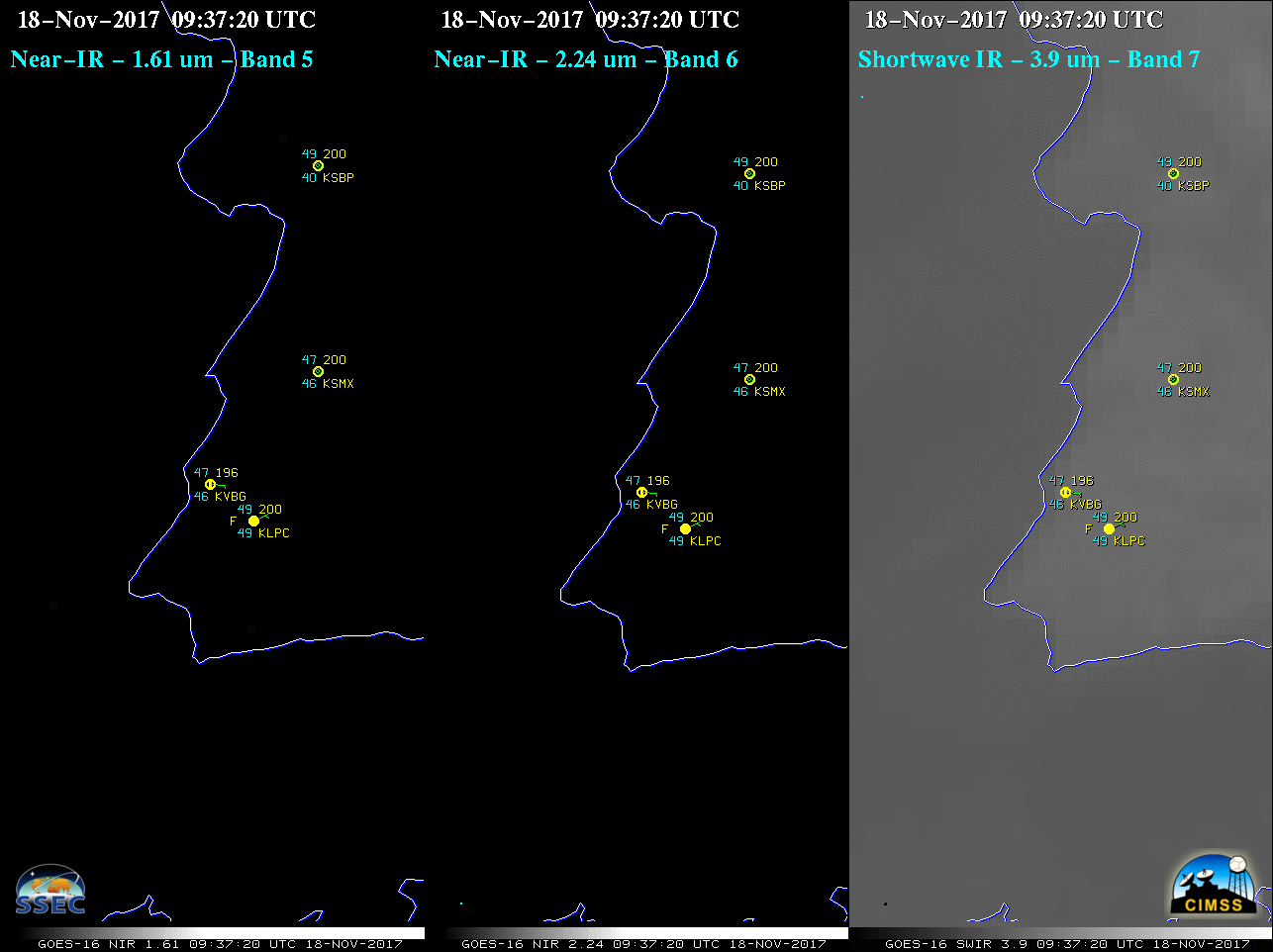Satellite signatures of the JPSS-1 launch
The JPSS-1 satellite was successfully launched at 0947 UTC (1:47 AM local time) on 18 November 2017 from Vandenberg Air Force Base, California (Spaceflight Now). A Suomi NPP VIIRS Day/Night Band (0.7 µm) image about 22 minutes prior to launch (above; courtesy of William Straka, CIMSS) showed light emitted by the launch facility as well as nearby cites and offshore buoys.A comparison of 3 consecutive images of GOES-16 Near-Infrared “Snow/Ice” (1.61 µm), Near-Infrared “Cloud Particle Size” (2.24 µm) and Shortwave Infrared (3.9 mm) data (below) revealed the thermal signature of the launch rocket booster engines at 0947 UTC (just west of the California coast). The hot thermal signature is brighter white on the Near-Infrared images, and darker gray on the Shortwave Infrared image. Nearby 09 UTC surface observations are also plotted (KVBG = Vandenberg AFB).

GOES-16 Near-Infrared “Snow/Ice” (1.61 µm, left), Near-Infrared “Cloud Particle Size” (2.24 µm, center) and Shortwave Infrared (3.9 mm, right) images, with plots of surface observations [click to enlarge]
![GOES-16 Lower-level (7.3 µm, left), Mid-level (6.9 µm, center) and Upper-level (6.2 µm, right) Water Vapor images, with plots of surface reports [click to enlarge]](https://cimss.ssec.wisc.edu/satellite-blog/wp-content/uploads/sites/5/2017/11/171118_goes16_WaterVapor_JPSS1_launch_anim.gif)
GOES-16 Lower-level (7.3 µm, left), Mid-level (6.9 µm, center) and Upper-level (6.2 µm, right) Water Vapor images, with plots of surface reports [click to enlarge]
* GOES-16 data posted on this page are preliminary, non-operational and are undergoing testing *


![Suomi NPP VIIRS Day/Night Band (0.7 µm) image [click to enlarge]](https://cimss.ssec.wisc.edu/satellite-blog/wp-content/uploads/sites/5/2017/11/171118_0925utc_VIIRS_DNB_Vandenberg_lables.png)